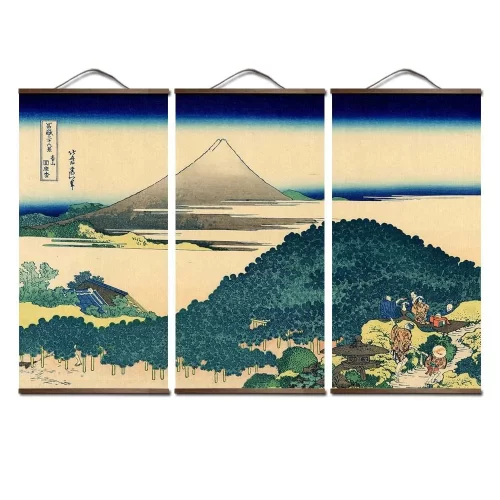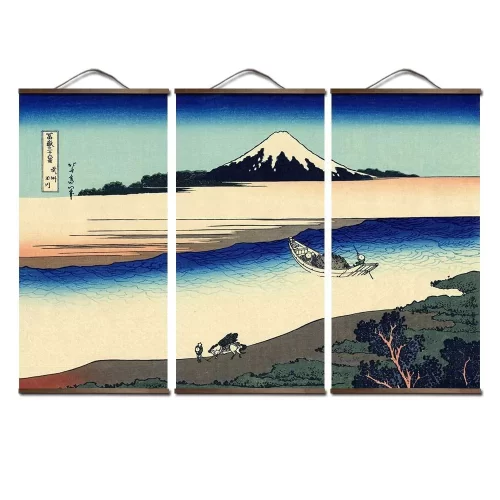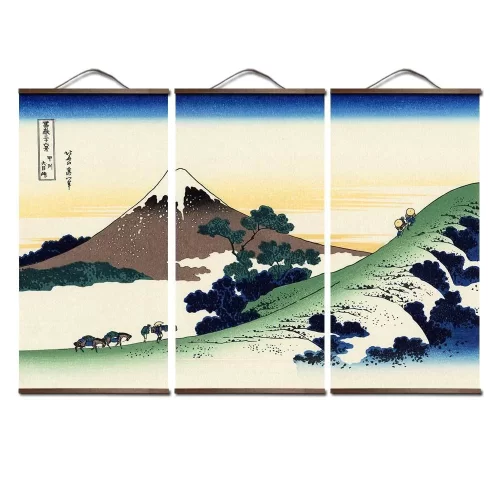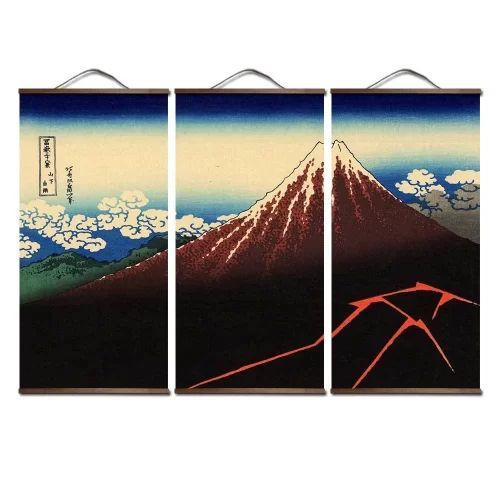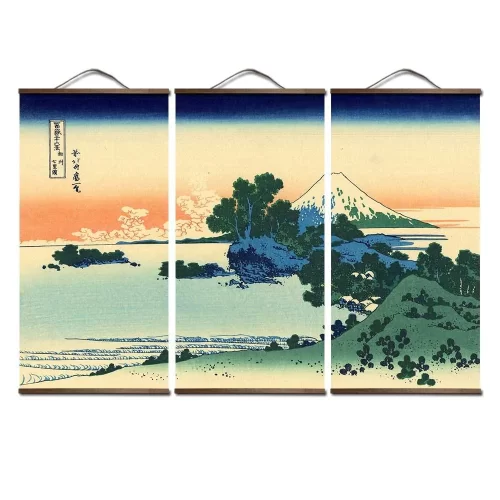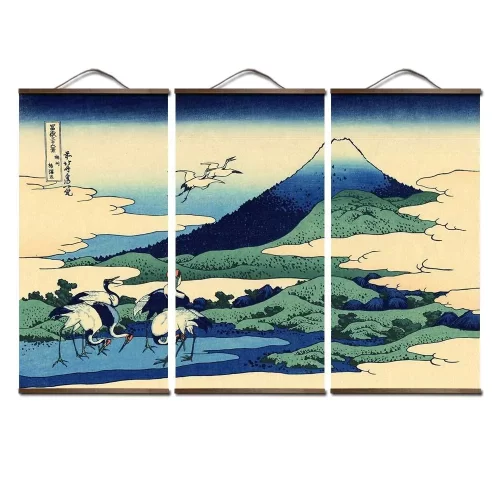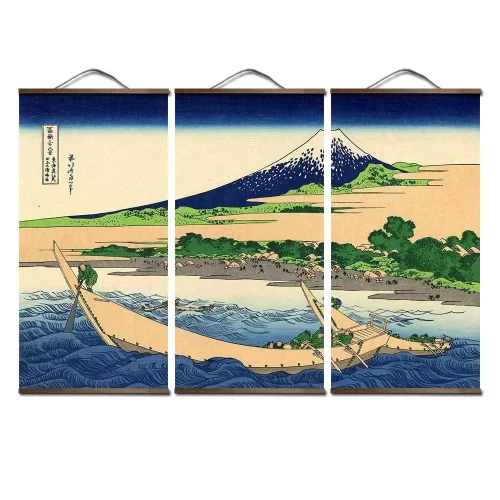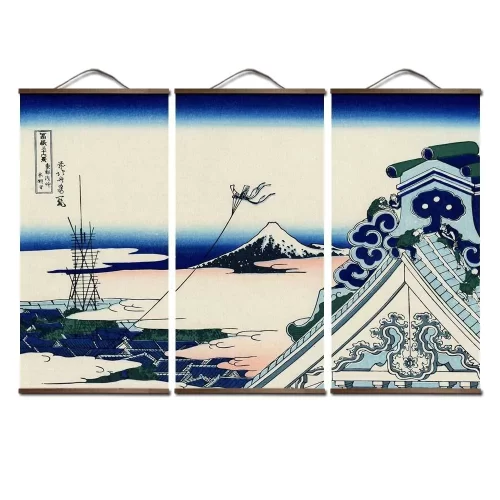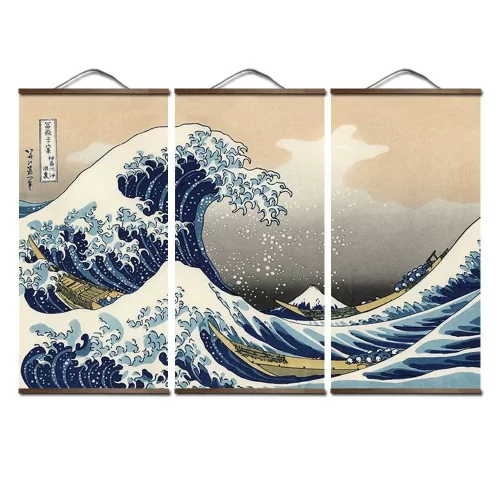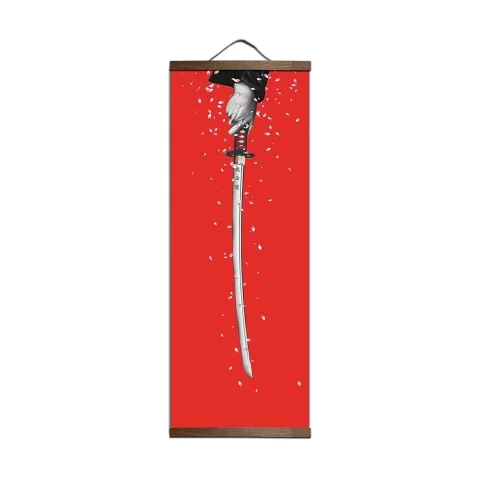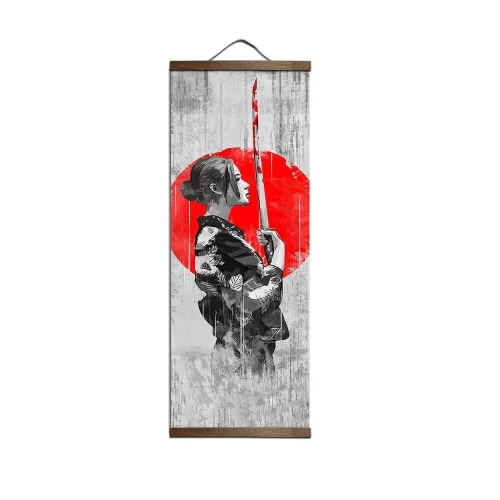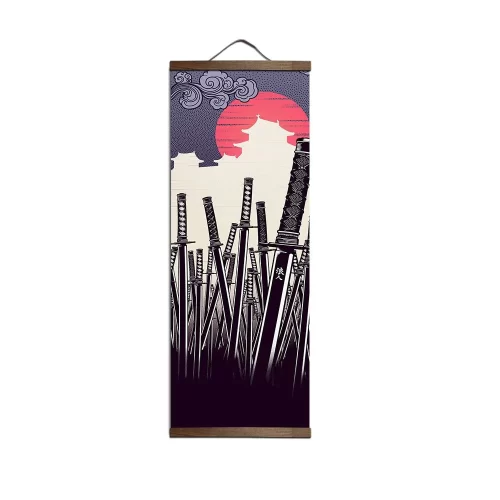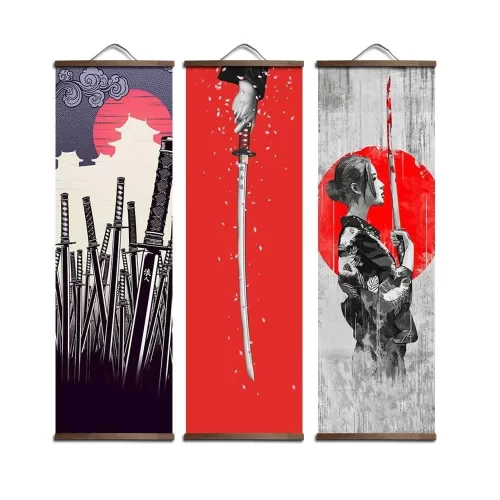Japanese Wall Art


Filter by price
Decorating, whether it is inside or outside your house or apartment, shows the value and goodness of different places; there are many objects that one can choose to decorate their home. The art painting is one of the most used decorations. Among them, the Japanese painting is very particular and it is this particularity which makes its effect with the amateurs of decoration.
The history of the Japanese painting
Considered as one of the oldest art forms, Japanese art has gone through the history of Japan with its wide variety of genres and styles. Since the 6th century, Japanese art lovers focused on the funerary painting of some kofun, and after many revolutions and evolutions, the popularity of Japanese painting has increased over time. Young people are very interested in manga and anime movies, so the creators of Japanese art paintings had the idea to take well-known figures from Japan’s favorite manga and integrate them into prints and paintings. Japanese prints are images created by printing with the help of an engraved plate. Japanese printmaking is a mixture of the xylographic art and the art movement practiced by the Buddhists.
The different trends in Japanese art
There are traditional and modern trends.
For the most traditional currents: at the end of the antiquity, the Yamato-e appeared. It is the first artistic current published in the field of painting in Japan around 794 and 1185. It shows the scenes of the daily life of Japanese people and also the landscapes. It is a national art style. Then, there is the Ukiyo-e which appeared between 1618-1694. It is known as a Japanese pictorial current throughout the world and based on popular art which is characterized by urban effervescence. This artistic movement evokes a style that is not very colorful and joyful, and a fear is felt through some of its works of art. Some of their works are considered vulgar, but they are always based on the theme of pleasure and contemplation. In the early 1740s, European modern art paintings became very famous and this inspired the great Japanese painters.
Japanese painting often represents the theme of purity and tradition.
For the modern currents: in the 20th century, new currents are born to increase the fame of Japanese painting as the Nihonga, this current is based on the typical Japanese themes and landscapes. With a great delicacy on the paintings, they invoke details of styles characterizing on the greatest masters of the Japanese painting. Nihonga combines past traditions with Japanese and Western art in its Japanese prints. Then there is the Yoga style; the second modern trend of Japanese painting. Its particularity is the use of western techniques like oil paints to mix it with Japanese imagery. But this does not mean that he abandons the old ones, he integrates the basic ideas into the modern Japanese values; so that the combination of tradition and novelty is observed in Japanese painting today.
Why is the Japanese painting so special?
First of all, it is necessary to know the meanings of Japanese paintings, then what they are filled with various meanings; and discovering them helps to know the real meaning of the story introduced in the painting. For the texture, whether it is ancient or modern, the Japanese painting is based on the unique art, and also its painting is always made from the landscapes or real facts of the ancient time. Then the designs seen in these paintings are always associated with Japanese nature and culture, so it is not just a canvas hanging on a wall, but a living art that is enjoyable to experience. Having a Japanese painting in your home is to create an atmosphere, patterns, and a style that is valuable and precious in the sight of this ancient culture. Japanese painting introduces all kinds of drawings and graphic styles that highlight all the facets of Japanese culture. Of course, one must show a minimum affinity with Japanese culture and folklore to appreciate its art. A Japanese painting will look great in a room accompanied by a Japanese fan or a Japanese mask.
The different types of Japanese paintings
The paintings related to Japanese philosophy, they are works that contain key elements of Japanese traditional culture, for example sacred animals such as the Crane, the Maneki Neko or the fox. It is the same for Japanese paintings representing landscapes with Sakura or Mount Fuji.
For example, the wave of Kanagawa, a work made by the painter from Japan Hokusai, represents perfectly the Japanese landscape. It is a sure value that represents the contemporary art of the Edo era with a colorful work of art, the paintings of this artist have made unanimity among the Japanese.
How can we choose the best Japanese painting?
Japanese art is a painting that some people think will have more impact on the decoration because of the original design. You can choose to use unique and colorful paintings on any room of your house such as living room, bedroom, kitchen or other important room that will be perfect to host these paintings. It is quite difficult to choose Japanese paintings since today’s paintings have many varieties. So, to facilitate the choice of the customers, we ask the customer to think about the art that transcends him and what atmosphere he wants to represent in his home or in his room so that the painting is the desired impact. And for those who are passionate about well-being, the choice is based on representations of Buddha, geisha, flower or landscape that gives a little Zen and relaxing atmosphere in a room. To have more originality, we must focus on paintings from more contemporary trends.
Ways to enhance a Japanese painting
Knowing how to choose the best Japanese painting is important, but knowing how to highlight it in a room is also very important. Whether it is in any room, integrate a Japanese painting in a house not adapted and the result will not be satisfactory to you. Here are some tips that can help the Japanese painting enthusiasts.
For the choice of framing
About the contemporary works, choosing the neutral frame is necessary for the dark wood or black style. And if the tones used on the painting are very light, you can choose light wood or white frames. For a Japanese painting of old current or a portrait, optimizing on old frames at antique shops would be the best.
On the location of the painting
It depends first of all on the size of the painting, for an imposing canvas to be placed in the middle of a large wall would be best to leave some distance around it to make it stand out in the room and give a warm atmosphere. It will depend on the painting and the configuration, putting them in common rooms like the dining room is a good idea, because it is usually a large room that receives a lot of light in which it is easy to find a wall with a size large enough to hang the canvas. But, it can also be put in a room because it allows to give personality and to be closer to the culture of Japan. This does not mean that other places are not suitable to put a Japanese painting, it will depend on the choice and also the decoration of the room.
About the lighting
A good lighting gives a good depth to the Japanese painting. And you should not put it opposite to the light sources if you want to show the beauty of the painting. Whether it is natural lights or artificial lights, it shows the goodness of the painting. Knowing how to place it in a good place radiated by the light brings out the colors on the painting and the best material in the painting.

